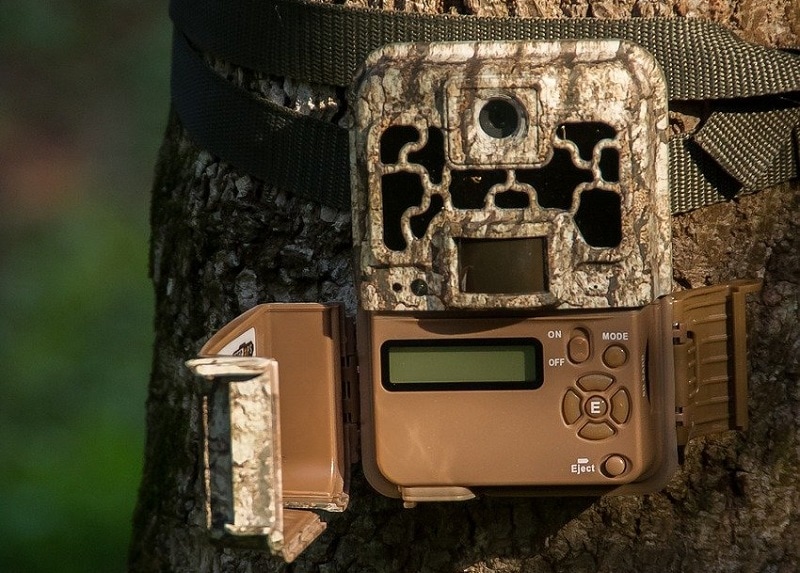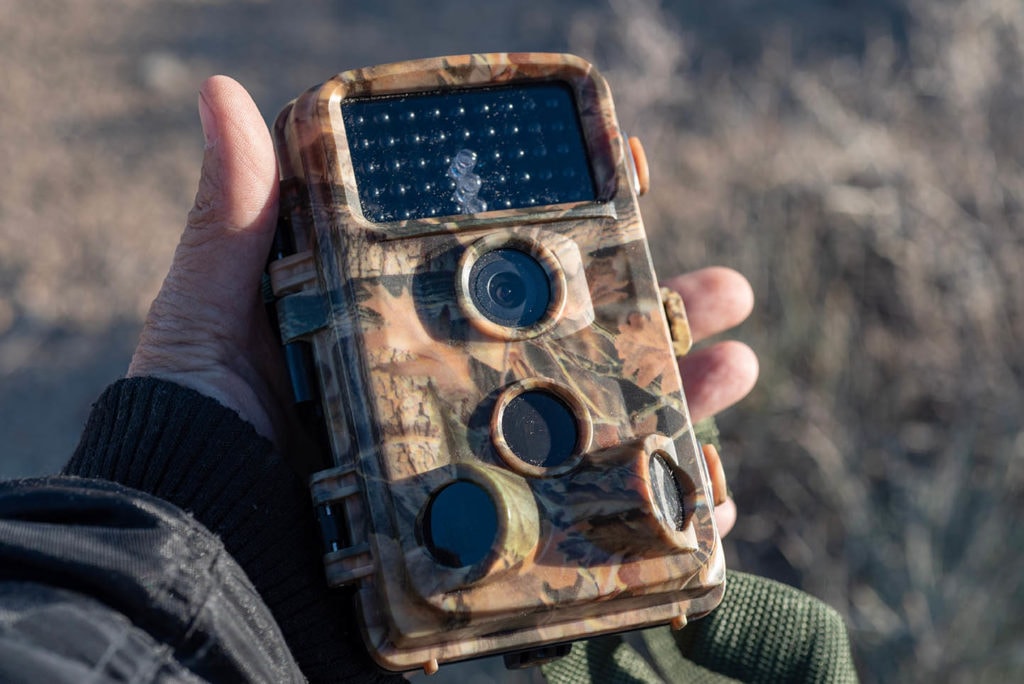How Do Cellular Trail Cameras Work?
Last Updated on

No matter how much work and prep you do for hunting season, it won’t matter much if your stand and trails are far away from the desired game. That’s where cellular trail cameras come in handy. They can help you spot where the animals are located, so you know where to be during hunting season.
If you want to maximize your cellular trail camera, it’s important to know how it works. Once you know how it works, you can set up the camera properly to spot your game and use that knowledge to your advantage. Knowing how they work can also ensure you make the right purchase based on your needs.
To help you out, we have created this guide for understanding how cellular trail cameras work.

How Do Cellular Trail Cameras Work?
Cellular trail cameras are cameras that will notify you via cellular service every time the camera is triggered. You can set up the camera so that it texts you or emails you the picture. Either way, you will be notified 24/7, anytime the cellular trail camera is set off. How exactly does this work?
Cellular trail cameras are equipped with motion-sensitive sensors. Even insignificant motions can set off cellular trail cameras. Whenever the motions are detected, the cameras will record images and send notifications to your phone through the set up cellular service.
You don’t have to worry about the cellular trail camera dying. Because these cameras are equipped for outdoor purposes, most are wire-free and are powered by batteries or solar power. In other words, a battery or solar panel will provide the cellular camera with the power it needs.

What Are the Different Types of Cellular Trail Cameras?
There aren’t many different kinds of cellular trail cameras. However, you can separate these cameras based on the battery power. As we learned above, cellular trail cameras can be powered by batteries or solar power. Both of these options are reusable, effective, and outdoor safe.
Ultimately, it’s up to personal preference to determine which of these battery forms is best for you. Most battery-powered cellular trail cameras include rechargeable batteries. So, you will need to pick up the cellular trail camera and recharge the battery as it begins to die. With solar power batteries, you won’t have to recharge the batteries, but you do run the risk of the battery not getting enough power on rainy days.
Where Are They Used?
As the name suggests, cellular trail cameras are most commonly used on game trails. The idea behind the camera is to locate where the animals spend their time so that you can be positioned accordingly come hunting time.
That being said, cellular trail cameras aren’t just for hunting purposes. Some individuals select these cameras to use as a general outdoor camera. You can put cellular trail cameras outside your property to protect against break-ins, burglaries, or other illegal actions.
Advantages of Cellular Trail Cameras
The biggest advantage of cellular trail cameras is that they provide you with another set of eyes, even when you are away from your property. This is super handy right before hunting season when you need to determine where the animals are located. Use this information to set up your blinds properly.
Better yet, not only are you notified about where the animals are located but you are notified in real-time. Any time you have your phone, you can get access to notifications about what’s happening on your property at specific times of the day.
Another advantage of cellular trail cameras is that they are specifically designed for the outdoors. Almost all cellular trail cameras are durable and water-resistant. That way, you don’t have to worry about the camera breaking just because it rains.

Disadvantages of Cellular Trail Cameras
Even though cellular trail cameras are a great addition for serious hunters, they aren’t the right choice for everyone. Really good cellular trail cameras can be fairly expensive. If you only hunt on occasion, a cellular trail camera may not be worth your money.
As if the camera wasn’t expensive enough, you also have to pay for some sort of subscription service or cellular service. The whole benefit of selecting a cellular trail camera is that you get notified in real-time on your phone. Cellular service is required for this feature, and that costs more money. Plus, the cellular service has to work with your phone.
Frequently Asked Questions (FAQs)

What is a cellular trail camera?
A cellular trail camera is a motion-activated camera that will send you texts or emails whenever the sensor is alerted.
Is a cellular trail camera the same as a wireless camera?
Even though most cellular trail cameras are wireless cameras, there is a difference between cellular trail cameras and wireless cameras. Cellular trail cameras work with your cellular service to notify your phone whenever the motion sensor is triggered. Wireless cameras are those that simply do not have any wires. So, most cellular trail cameras are wireless cameras, but not all wireless cameras are cellular trail cameras.
What’s the difference between a Wi-Fi trail camera and a cellular trail camera?
Wi-Fi trail cameras work with wireless internet in order to notify you whenever the trigger is alerted. In contrast, cellular trail cameras use cellular service instead of wireless internet to alert you.
Will cellular trail cameras work without cell service?
Unfortunately, cellular trail cameras need cell service to work. Because these cameras work just like your cell phone, it needs cellular service too.
How much data does a cellular trail camera use?
Most cellular trail cameras come with about 100 megabytes of data, which is equivalent to about 2,000 photos. You can upgrade to more extensive plans if you need more data.

Conclusion
Cellular trail cameras work by connecting to your cellular service. The cameras themselves are equipped with motion-activated sensors. If these sensors are triggered, your phone will be notified via text message or email so that you can check out what’s going on.
Cellular trail cameras may be a good investment for you if you are a serious hunter and need constant eyes on your land. It also may be a good idea if you own property and just want to make sure it is safe from illegal activities. That being said, these cameras are expensive. If you are on a budget or do not expect to use the cameras frequently, you might want to go with something more affordable.
- See also: 6 Best Cellular Trail Cameras
Featured Image Credit: sandid, Pixabay
About the Author Robert Sparks
Robert’s obsession with all things optical started early in life, when his optician father would bring home prototypes for Robert to play with. Nowadays, Robert is dedicated to helping others find the right optics for their needs. His hobbies include astronomy, astrophysics, and model building. Originally from Newark, NJ, he resides in Santa Fe, New Mexico, where the nighttime skies are filled with glittering stars.
Related Articles:
How to Clean a Refractor Telescope: Step-by-Step Guide
How to Clean a Telescope Eyepiece: Step-by-Step Guide
How to Clean a Rifle Scope: 8 Expert Tips
Monocular vs Telescope: Differences Explained (With Pictures)
What Is a Monocular Used For? 8 Common Functions
How to Clean a Telescope Mirror: 8 Expert Tips
Brightfield vs Phase Contrast Microscopy: The Differences Explained
SkyCamHD Drone Review: Pros, Cons, FAQ, & Verdict
